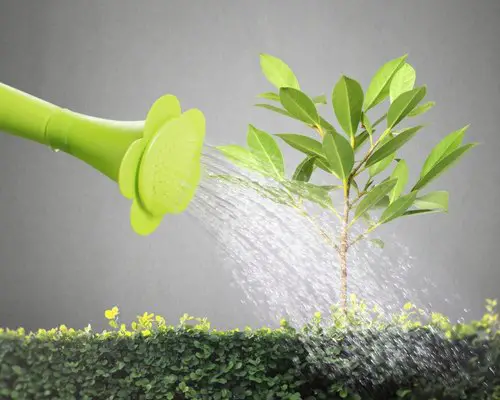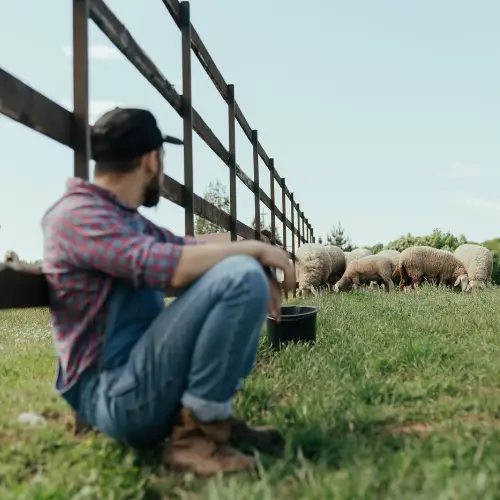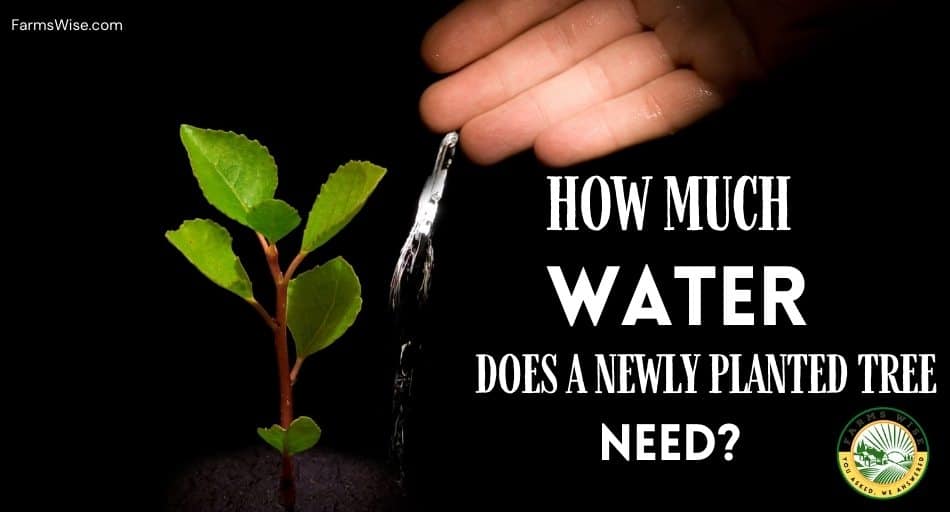When we’re little, we require a lot of special care, we need to be fed often, and nothing that is alive can survive long without hydration. A newly planted tree is not so dissimilar, it also likes attention and needs frequent watering to grow and thrive. So how much water does a newly planted tree need?
How Much Water Does a Newly Planted Tree Need?
Newly planted trees require enough water so that they are constantly in a moist environment but not so much that they are saturated. They need to grow and establish their root system in the soil, recover from any transplant shock they may have suffered, and adapt to the conditions of the landscape.
Newly planted trees require consistent watering until they are fully set up in their new environment.
How can you tell if a newly planted tree has enough water?
The best way to tell if your newly planted tree has enough water is to feel the soil around it. Grab a handful of dirt from the tree’s base and feel it in your palm. You are aiming for moist, not soggy, soil.
If the dirt is dry and crumbly that’s a sure sign that it doesn’t have enough water. If it’s muddy to the touch then your watering has gone too far. If you’re into gadgets, you can use a rain gauge on your property to monitor how much rainfall you are receiving and adjust any watering practices accordingly.
A rain gauge should be installed where there is no overhead obstruction. Consult the gauge after every rain event to get a reading on how much water your tree is receiving. Alternatively, local airports and weather channels collect and display rainfall data.

What is the best way to water a tree?
Trees are best watered gradually which is why a soaker hose or drip irrigation system is recommended. Sprinklers should be avoided if possible. Water from the planting area or the root ball of the tree extend outwards to several feet past where the foliage reach.
Initially, most of the tree’s roots will be contained within its root ball, it’s important to keep this area moist to encourage healthy root growth. Watering is best done when the sun’s gone down as this allows for the best use of moisture by the tree.
Can you overwater a newly planted tree?

Too much care and attention to watering? Well yes, it’s possible. While you may have the best intentions, overwatering a newly planted tree may eventually kill it with kindness.
Watering should be slow and deep rather than frequent and shallow as you don’t want to drown your newly planted tree.
How much water do trees need per day?
Arborists generally recommend watering an average of three to four times a week during the first months after a tree has been planted, however daily watering for the first few weeks is also often suggested.
The time of year will also affect how often you should water as different seasons trend towards varying precipitation rates and climate conditions. Extreme weather conditions such as drought may be a contributing factor as well be the soil type and plant species.
How long can trees go without water?
Established trees and landscapes have built up drought resistance as they’ve grown so they can go for longer periods without water. Newly planted trees however require frequent watering.
If we apply the common formula of a tree needing around 10 gallons of water per week for every inch of tree caliper, then a tree can survive an average of two weeks without water.
This is a very rough figure as a tree has a root system that is generally very clever at absorbing moisture present within the soil.
How long should a newly planted tree be staked?

Staking a newly planted tree is done for various reasons including to inspire vertical growth, for protection while the roots are establishing themselves so that multiple trees can be planted in close proximity, or when a tree is transplanted.
Tree staking is never intended as a permanent situation and tree-care professionals often recommend a staking period from six months to two years for newly planted trees.
It’s important to keep checking in with the tree regularly as the appropriate length of staking will depend on fluctuating conditions.
Once the tree is happily standing on its own and able to adequately resist wind and other pressures it’s likely it’s been staked for long enough.
How do you tell if a newly planted tree is dying?
You should be able to tell if your newly planted tree is dying by taking a simple twig test. Snap a twig from your tree to determine its life force. If the twig snaps easily and is brown and dry on the inside then it’s likely that your tree is dying.
If the twig is more bendy than brittle and harder to remove then this is often a sign of life. Dying or prematurely dropping leaves can be another symptom that your tree is suffering. In general, dry leaves should fall off the tree and not cling to it.
When considering the tree’s leaf conditions it’s important to factor in whether it is the appropriate time of year or the right kind of tree to be shedding its leaves.
Newly planted trees deserve the best possible start to life in their new location. Like newly formed humans, they are eager to grow given the right nutrients and are often resilient, and tend towards regeneration rather than decay.
With frequent watering and careful monitoring, you should be able to nurture your newly planted tree into a life force that will continue to thrive and spread its roots for many years to come.

Jack is the owner, chief editor, and senior writer of this website.
Machinery, engines, and farming have always been a passion of his since he was a young boy. Growing up on a small farm in rural America, he learned the value of hard work and dedication from an early age.
After completing his degree in Engineering, he decided to follow his dream and became a farmer in 2009.
Since then, he has gained a wealth of knowledge and experience in the field. He has grown a variety of crops, tended to farm animals, and worked with all sorts of farming machinery. Continue reading…




